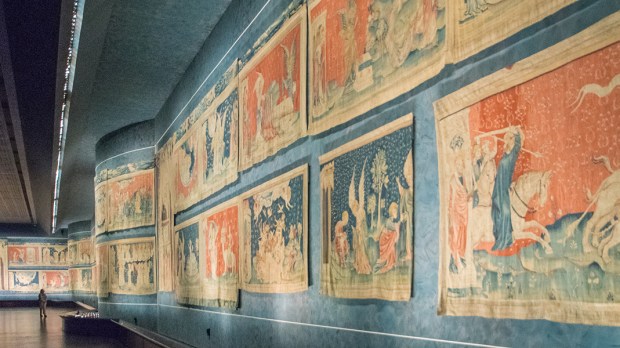Growing death tolls. Economic collapse. Widespread terror from the fact that a deadly virus can be so easily and unwarily caught. Deepening political divisions.
One can hardly be blamed for a creeping feeling that the end of the world is upon us. And one place many people have always turned for some hint as to what the end of the world might look like is the very last book of the Bible. The very name of that book — the Apocalypse — instills dread.
Whether St. John’s magnum opus, also known as the Book of Revelation, is to be considered a sure prophecy of things to come is a debate best left to trustworthy theologians. But it’s undeniable that the work he drafted while in exile on the Island of Patmos has been a source of fascination for millennia, especially in times of great trial and uncertainty. The creative among us have often offered their own interpretations of the Apocalypse, either as a reminder of where we are ultimately headed, or a way to give our fears an outlet, or both.
And so, British author John Kampfner reminds us of a major medieval depiction that grew out of a time of tribulation and almost met its own end in another time of upheaval. Its resurrection and salvation, as well as its attention to hopeful details in St. John’s narration, can serve as reminders, even to a world gripped by anxiety today, that we are ultimately in the hands of a loving God.
The story begins in 1375, when Louis I, Duke of Anjou, commissioned what has come to be known as the Apocalypse Tapestry. With such a name and such a subject, it would have to be big. How big? Originally, it was 459 feet long and 20 feet high. After going through the wringer in the course of centuries, 328 feet are currently preserved and on display.
As the website of the Angers Castle says, the tapestry “reflects the anxieties of the late 14th century, amid the context of the Hundred Years’ War.” But it was also a period of “extraordinary cultural impetus, backed by exceptional financial and technical resources.“
In 90 different scenes, it re-presents St. John’s vision of the final battle between good and evil, replete with Christ as lamb and Satan as dragon, the Seven Seals, the Four Horsemen, seven angels and seven trumpets.
Images of suffering abound in the work — images that must have been stamped into the artists’ minds, as they lived in a Europe that had only recently lost tens of millions of citizens to bubonic plague.
Kampfner points out that not long after the Black Death, Louis instructed Hennequin de Bruges, a Flemish painter to the court of King Charles V, to draw a group of miniatures from the Apocalypse. “His designs were then woven into 100 separate tapestries by the workshops of Nicolas Bataille and Robert Poincon using vivid red, blue and gold woolen thread,” Kampfner writes in the Guardian. “This epic work — the largest known medieval tapestry in the world — took nine years to complete.”
It was displayed only on special occasions, such as the marriage of Louis’s son, Louis II of Anjou, to Yolande of Aragon at Arles in 1400.
We are fortunate to live at a time when the general public can see it — if you can get to France, that is.
Kampfner quotes art historian Natasha O’Hear as saying that nowhere is the story of Revelation more vividly told than on this tapestry. For those unfamiliar with the Revelation story, “no better introduction could be imagined,” says O’Hear, whose book, Picturing the Apocalypse, is a study of two millennia of art inspired by the Book of Revelation.
“People turned to Revelation in difficult times, as they are attracted by its deterministic world view and its black-and-white certainty,” O’Hear says.
The tapestry almost met its end during the French Revolution, when it was looted, cut into pieces and used as floor mats and blankets for horses.
”The pieces were gathered back by a canon of the cathedral and all but 16 were found and restored,” Kampfner writes.
It’s a story of redemption not unlike the salvation history of which St. John is a herald and which gave the Christians of medieval Europe so much hope. The Evangelist is woven into almost all of the panels.
”The tapestry tells you all you need to know about fear — and hope,” Kampfner tells us.
“One of the most beautiful images, after all the blood and fury, is of John on the point of walking up the river of life into the new Jerusalem.”

